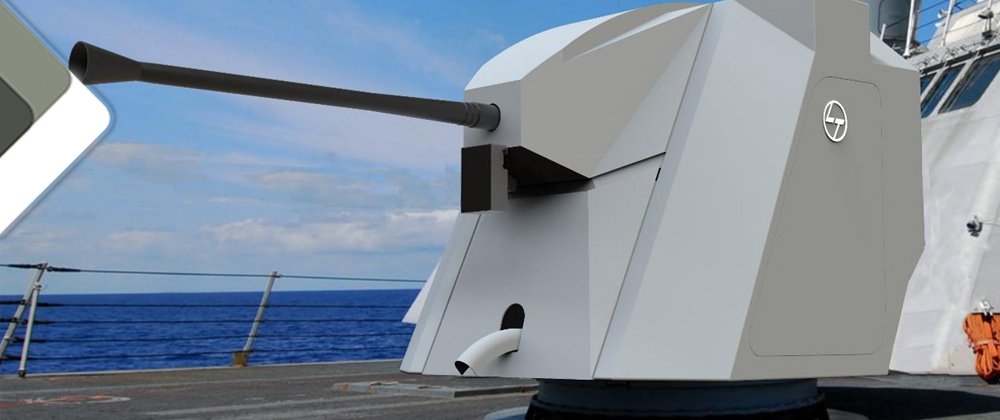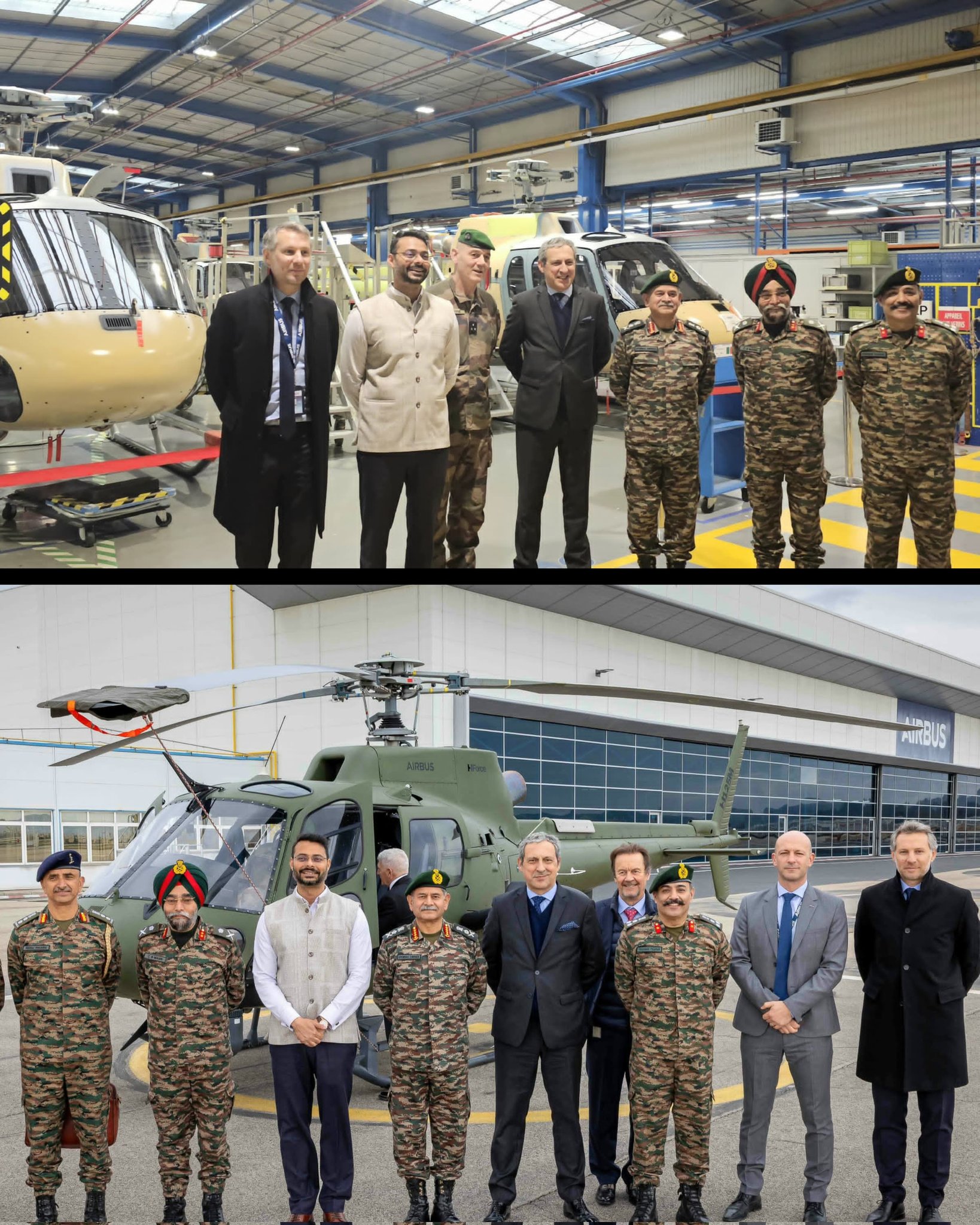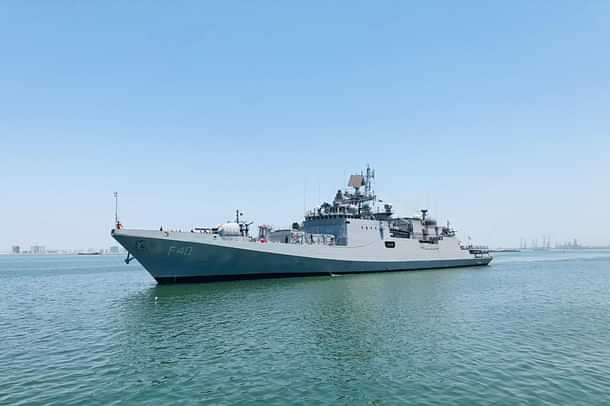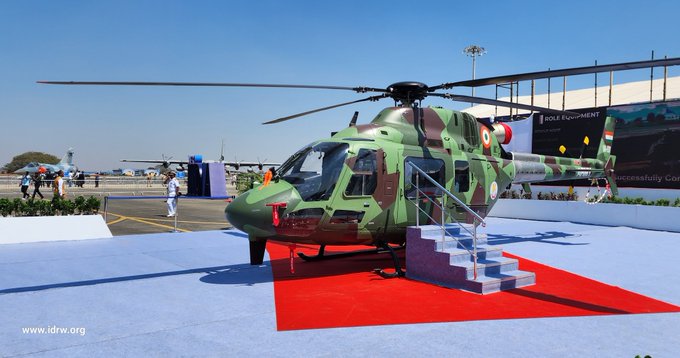SOURCE: AFI


In a historic milestone for the Indian Air Force (IAF), Flying Officer Tanushka Singh from Mangaluru is set to become the first woman pilot permanently assigned to the Jaguar fighter squadron. Hailing from a proud military family, Tanushka’s induction into the elite combat unit marks a significant step forward in breaking gender barriers within India’s armed forces. Her journey to the cockpit of the Jaguar, a deep-strike fighter jet, is both a personal triumph and a testament to the IAF’s evolving inclusivity.
Tanushka Singh, who proudly identifies as a “Kudla girl” from Mangaluru, Karnataka, will soon join the ranks of the IAF’s Jaguar squadron, a fleet renowned for its precision strike capabilities. Until now, no female pilot had been permanently assigned to fly the Jaguar, an Anglo-French aircraft that has been a mainstay of the IAF since its induction in 1979. While some women pilots have flown the jet on experiential sorties, Tanushka’s selection as a permanent member of the squadron sets a new precedent.
Continue readingSOURCE: AFI


As the Pakistan Air Force (PAF) commemorates its 2019 aerial operation dubbed “Swift Retort,” a curious display has surfaced at PAF Base Sargodha, raising eyebrows and questions about the accuracy of its narrative. A board in the briefing room proudly declares that a PAF F-16 shot down an Indian Air Force (IAF) Su-30 MKI fighter jet belonging to No. 25 Squadron, known as the “Himalayan Eagles,” during the skirmish on February 27, 2019.
However, this claim crumbles under scrutiny, as No. 25 Squadron does not operate the advanced Su-30 MKI fighter but is, in fact, a transport unit equipped with Antonov An-32 aircraft. This discrepancy shines a spotlight on the perils of misinformation in military propaganda and the complexities of post-conflict narratives.
Continue readingSOURCE: AFI


After decades of thundering over India’s seas, the Westland Sea King Mk. 42C, a stalwart of the Indian Navy’s helicopter fleet, has officially hung up its rotors. Recently spotted aboard a trailer truck rumbling along a Goan highway, this venerable aircraft is believed to be en route to its final resting place: the Naval Aviation Museum in Dabolim. For a helicopter that once dominated anti-submarine warfare (ASW) and troop transport missions, this journey marks the end of an era—and the beginning of a new chapter as a historical exhibit.
The Sea King Mk. 42C, a utility variant of the British-built Westland Sea King family, joined the Indian Navy in September 1986, with six airframes (serial numbers IN555 to IN560) delivered to bolster its rotary-wing capabilities. Powered by twin Rolls-Royce Gnome engines, this helicopter was a workhorse, capable of carrying 28 troops or 22 survivors in search-and-rescue (SAR) roles. Unlike its ASW-focused siblings, the Mk. 42C was equipped with a nose-mounted Bendix RDR 1400C radar, optimized for transport and support missions rather than submarine hunting.
Continue readingSOURCE: RAUNAK KUNDE / NEWS BEAT / IDRW.ORG


The first design of the Jalkapi Extra-Large Unmanned Underwater Vehicle (XLUUV), a cutting-edge asset under development for the Indian Navy by Hyderabad-based Rekise Marine Private Limited, surfaced at Aero India 2025, held in Bengaluru from February 10-14. Offering a sneak peek into India’s most ambitious unmanned submarine project, the Jalkapi underscores the nation’s push toward indigenous defense innovation. As the largest and most complex unmanned underwater platform in India’s defense ecosystem, this 20-ton behemoth promises to redefine underwater surveillance and strategic operations in the Indian Ocean Region (IOR).
Displayed as a detailed scale model at the Rekise Marine pavilion, the Jalkapi XLUUV measures 11 meters in length with a sleek, cylindrical hull designed for stealth and hydrodynamic efficiency. Displacing 20 tons, it is engineered to operate at depths of up to 300 meters—an impressive feat for an Indian-built autonomous underwater vehicle (AUV). Its endurance, ranging from 30 to 45 days at sea, rivals that of Boeing’s Orca XLUUV, a benchmark in the global unmanned underwater domain. This capability is enabled by an onboard diesel generator that recharges its lithium-ion battery pack, allowing the Jalkapi to surface autonomously, replenish power, and dive back into its mission without human intervention.
Continue readingSOURCE: RAUNAK KUNDE / NEWS BEAT / IDRW.ORG


After successfully securing a contract in 2022 for 2 40 mm naval gun systems, Larsen & Toubro (L&T), one of India’s leading defence manufacturers, is set to deepen its collaboration with the Indonesian Navy. Indonesia has decided to procure additional units of the ‘Teevra 40’ naval gun systems for its warships, marking a significant expansion of defence ties between the two nations.
The Teevra 40, developed by L&T, is a modern naval gun system that has become a cornerstone in the Indian Navy’s arsenal, now gaining traction internationally.
Continue readingSOURCE: RAUNAK KUNDE / NEWS BEAT / IDRW.ORG


In a significant development for India’s defense aviation sector, Airbus is positioning itself to capitalize on the stalled negotiations between India and Russia over the procurement of nearly 200 Kamov Ka-226 helicopters. The European aerospace giant is keen to offer its H125 helicopter, tailored specifically to meet the Indian Army’s requirements, as an alternative to the Russian deal that has been languishing for years.
The Indian Army and Indian Air Force have a combined requirement for approximately 400 light-class helicopters to bolster their operational capabilities. This demand was originally split into two major procurement plans. The first involved acquiring 200 twin-engined Kamov Ka-226 helicopters from Russia, with local assembly to be undertaken by Hindustan Aeronautics Limited (HAL) under a government-to-government agreement. The second plan aimed at procuring 200 indigenously developed single-engine Light Utility Helicopters (LUH) from HAL. Both helicopter types were slated for production at HAL’s facility near Tumakuru, Karnataka, as part of India’s push for self-reliance in defense manufacturing.
Continue readingSOURCE: AFI


In a significant boost to India’s indigenous fighter jet programs, Bengaluru-based Southern Electronics has developed an advanced side-mounted pilot control grip, engineered to enhance pilot performance and comfort. This cutting-edge system, tailored for the Tejas MkII (Medium Weight Fighter) and slated for integration into the Advanced Medium Combat Aircraft (AMCA), has cleared rigorous evaluations by test pilots and received approval for production.
The company recently confirmed to industry sources that it has secured orders from Hindustan Aeronautics Limited (HAL), with deliveries expected soon for integration into the Tejas MkII prototype currently under manufacturing. This development underscores India’s growing expertise in aerospace ergonomics and its commitment to self-reliance under the Atmanirbhar Bharat initiative.
Continue readingSOURCE: AFI


In a thought-provoking column, Sameer Joshi, founder of NewSpace Research & Technologies Pvt Ltd, has spotlighted the transformative potential of Collaborative Combat Aircraft (CCA)—a paradigm shift poised to reshape modern air combat over the coming decades. As nations race to maintain air superiority in increasingly contested skies, CCAs promise to blend human ingenuity with AI-driven robotic assets, offering early adopters a decisive edge. For India, grappling with shrinking fighter squadrons and sophisticated Anti-Access/Area Denial (A2/AD) threats from China and Pakistan, this “system of systems” philosophy could herald a new era of affordable, decentralized combat mass. Joshi’s analysis, published on Medium, underscores how CCAs could redefine the Indian Air Force (IAF), amplifying its lethality, survivability, and strategic reach in the fight for command of the skies.
At its core, the CCA concept pairs human pilots with uncrewed, AI-enabled wingmen, harnessing cutting-edge technologies to outpace adversaries. Joshi envisions a future where pilots command swarms of CCAs to scout ahead, jam enemy radars, or strike targets—keeping manned jets like the Tejas, Su-30 MKI, or Rafale out of harm’s way while focusing on high-level decision-making. This collaborative approach departs from today’s reliance on “exquisite, expensive, and scarce” 4th, 4.5th, and 5th-generation platforms, which are ill-suited to penetrate layered A2/AD defenses without risking unsustainable losses.
Continue readingSOURCE: AFI


The Indian Army is poised to revolutionize its operational capabilities across the northern and northeastern sectors with the imminent induction of the Xploder, a remotely operated unmanned ground vehicle (UGV) developed in-house by Major Rajprasad of the 7 Engineer Regiment. Following rigorous trials over the past two years, this all-terrain platform has met the force’s stringent requirements and is now set for mass production by a private industry partner. “Hundreds of these units will be inducted into infantry, Special Forces, and Corps of Engineers units within the next few months for counter-insurgency and counter-terrorism operations,” Major Rajprasad announced, heralding a new era of technological preparedness.
The Xploder UGV emerges as a direct response to a persistent threat plaguing the Indian Army: improvised explosive devices (IEDs). “Over the decades, we’ve faced evolving IED challenges from terrorist groups. Many soldiers lost their lives, and a sizeable number were seriously injured during operations in forward areas,” Major Rajprasad explained. “This prompted me to work on a tangible solution to counter it.” The result is a versatile, battle-ready UGV designed to minimize human risk while maximizing tactical impact, a testament to the Army’s push for innovation under the “Aatmanirbhar Bharat” initiative.
Continue readingSOURCE: AFI


Major General (Retd) G.D. Bakshi, a prominent Indian military commentator, recently stirred debate by asserting that Russia’s Su-57 Felon, while not as stealthy as the U.S. F-35 Lightning II, surpasses China’s J-35A and J-20 fighters in overall capability. Speaking at a defense symposium in New Delhi in February 2025, Bakshi’s remarks challenge prevailing narratives around fifth-generation fighters, spotlighting the Su-57’s strengths—and its shortcomings—in the stealth race. As India weighs options like Russia’s Product 177S engine for its own programs, this assessment prompts a closer look at how these aircraft stack up in the contested skies of modern warfare.
The Lockheed Martin F-35A, with over 1,000 units delivered globally by 2025, is the gold standard for stealth. Its radar cross-section (RCS)—estimated at 0.001-0.005 square meters—owes much to its angular design, radar-absorbent materials (RAM), and internal weapons bays. The AN/APG-81 AESA radar and Distributed Aperture System (DAS) amplify its situational awareness, making it a “flying sensor” that evades detection while striking from beyond visual range (BVR). Bakshi’s concession that the Su-57 isn’t as stealthy aligns with expert consensus: the Felon’s RCS, pegged at 0.1-0.5 square meters, reflects compromises like exposed engine fans, riveted panels, and external weapon hardpoints in early models.
Continue readingSOURCE: IDRW.ORG


In a significant milestone for the Indian Navy, Tamal, the last warship India will import from abroad, is on track for commissioning in June 2025. This stealth frigate, currently under construction in Russia, marks the end of an era as India shifts toward complete self-reliance in warship design and production. As the commissioning date approaches, an Indian naval crew has already arrived in Russia to participate in a series of critical trials, ensuring the vessel is ready to join the fleet.
Tamal is the second of two stealth frigates being built in Russia under a $2.5 billion inter-governmental agreement signed with India in October 2016. The deal, part of Project 11356, includes four frigates: two constructed at the Yantar Shipyard in Kaliningrad, Russia (INS Tushil and Tamal), and two to be built domestically at Goa Shipyard Limited (GSL) with Russian technical assistance. The first Russian-built frigate, INS Tushil, was commissioned on December 9, 2024, in Kaliningrad, attended by Indian Defence Minister Rajnath Singh. Now, Tamal is poised to follow, closing the chapter on imported warships for the Indian Navy.
Continue readingSOURCE: IDRW.ORG


Recent developments suggest that India is poised to take a significant step toward enhancing its air defence capabilities through a potential partnership with Russia to produce the advanced Pantsir air defence missile-gun system locally. Commodore A Madhavarao (Retd.), Chairman and Managing Director of Bharat Dynamics Limited (BDL), confirmed to Sputnik India that discussions on local production are “going well,” marking a potential milestone in the decades-long defence collaboration between the two nations.
The prospect of India producing Russia’s Pantsir systems stems from a Memorandum of Understanding (MoU) signed in November 2024 between BDL and Russia’s state-owned Rosoboronexport. The agreement, signed during the 5th India-Russia Inter-Governmental Commission (IRIGC) subgroup meeting in Goa, laid the groundwork for cooperation on variants of the Pantsir, a mobile, short-range air defence system known for its versatility and effectiveness. The Pantsir-S1, in particular, combines missile and gun capabilities, making it a formidable tool against a range of aerial threats, including aircraft, drones, cruise missiles, and precision-guided munitions.
Continue readingSOURCE: AFI


A crucial meeting scheduled for February 28 at Indian Army Headquarters in New Delhi could prove decisive for the future of the Light Utility Helicopter (LUH) program. Spearheaded by Hindustan Aeronautics Limited (HAL), the LUH is positioned as a modern, indigenous replacement for the Indian Army’s aging fleet of Cheetah and Chetak helicopters, which have served as lifelines in high-altitude and remote operations for decades. However, recent developments—including technical hiccups, safety concerns, and evolving Army requirements—suggest that the path forward for this ambitious program is anything but straightforward.
Designed by HAL’s Rotary Wing Research and Design Centre, the LUH is a 3-tonne-class helicopter intended to meet the Indian Armed Forces’ pressing need to phase out the obsolete Cheetah and Chetak platforms, many of which are over 30 years old and nearing the end of their technical life. With a maximum speed of 260 kmph, a service ceiling of 6.5 km, and a range of 350 km, the LUH promises enhanced performance in the rugged terrains of the Himalayas and other challenging environments. The helicopter’s glass cockpit, single Shakti engine, and crash-worthy design mark it as a significant upgrade, tailored for roles like troop transport, reconnaissance, and casualty evacuation.
Continue readingSOURCE: AFI


The prospect of India acquiring the Lockheed Martin F-35 Lightning II from the United States and Pakistan securing the Shenyang J-35A from China has sparked intense speculation about how these advanced stealth fighters might reshape air combat dynamics in South Asia. As fifth-generation platforms, both jets bring cutting-edge stealth, sensor fusion, and network-centric warfare capabilities to the table. Should both nations integrate these aircraft into their arsenals, a combat scenario between the Indian Air Force (IAF) and Pakistan Air Force (PAF) would hinge on technology, strategy, and the broader geopolitical context. Here’s how such a clash might unfold.
The F-35A, the conventional takeoff and landing variant India might pursue, is a proven multirole stealth fighter. With its AN/APG-81 AESA radar, Distributed Aperture System (DAS), and advanced electronic warfare suite, it excels in situational awareness and beyond-visual-range (BVR) engagements. Its stealth design reduces its radar cross-section (RCS), and its internal weapons bay can carry AIM-120 AMRAAMs or precision-guided munitions, maintaining its low-observable profile. Powered by a Pratt & Whitney F135 engine (43,000 lbf with afterburner), the F-35A boasts a combat radius of over 1,200 km and a top speed of Mach 1.6.
Continue readingSOURCE: AFI


Turkey’s ambitious Kaan fifth-generation fighter jet program has taken the aerospace world by storm, securing international partnerships after just two flights of what was essentially a ground engineering model. Meanwhile, India’s Advanced Medium Combat Aircraft (AMCA), poised for a full-fledged prototype flight by 2028, has yet to make similar diplomatic or commercial waves. This disparity raises questions about India’s export strategy for the AMCA—a jet that could fill a critical gap for nations unable to procure the U.S. F-35 or China’s J-35A—underscoring a missed opportunity to leverage its advanced indigenous technology on the global stage.
The Kaan, developed by Turkish Aerospace Industries (TAI), achieved its maiden flight in February 2024, followed by a second in December, marking Turkey’s entry into the elite fifth-generation club. Though these flights used a stripped-down prototype—lacking key Line Replaceable Units (LRUs) like radar, avionics, and weapons systems—Turkey wasted no time capitalizing on the milestone. By Aero India 2025, reports emerged of Azerbaijan, Pakistan, and Qatar expressing interest in joining the program, with Saudi Arabia and Indonesia also in talks for co-development or procurement. Turkey’s aggressive outreach, backed by a $20 billion investment and NATO-aligned credentials, has positioned the Kaan as an alternative for nations frozen out of the F-35 program due to politics (e.g., Turkey’s own S-400 purchase) or cost.
Continue reading